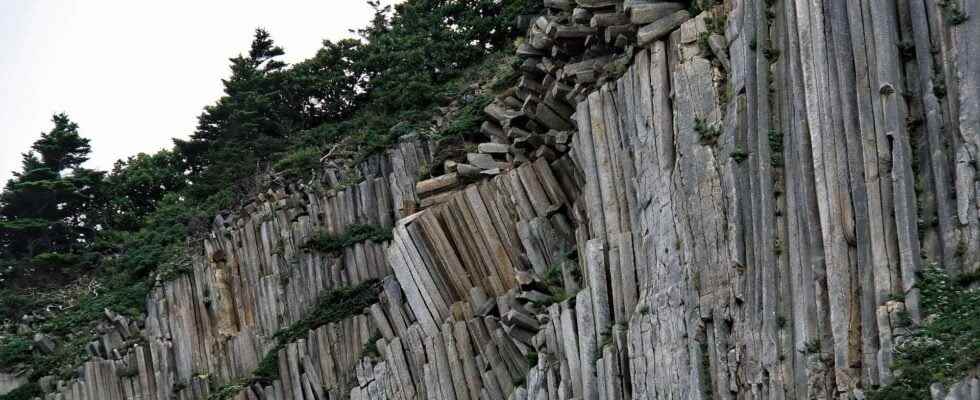Andesites are part of the large family of volcanic rocks. Of color Light gray that can go to black, andesite has a microlitic structure, which means that the majority of the crystals that compose it are microscopic in size. It can however show the presence of phenocrysts of feldspars plagioclases and minerals ferromagnesians such as pyroxenes and amphiboles. These large crystals are embedded in a microcrystalline paste – we speak of glass. They are generally well individualized and often altered.
A rock characteristic of the volcanism of subduction zones
Andesites belong to the calc-alkaline magmatic series. This type of volcanic rock is characteristic of the volcanism of subduction zones. They are therefore particularly present in the Andes cordillera, from which they derive their name, but also in the island arcs, like the West Indies, Indonesia, Japan … The needle of Mount Pelée in Martinique is a formation andesitic. The famous Krakatoa is also an andesitic volcano.
Andesites result from the solidification on the surface of lava of intermediate composition. The temperature of fusion is between 900 and 1,100 ° C. The equivalent of andesite among plutonic rocks (crystallizing in depth) is the diorite. By its surface solidification process, andesites can contain a certain amount of bubbles. The viscosity lava of andesitic composition varies according to its acidity: the more it is acid, the more viscous it is.
Origin of andesitic lavas
In subduction zones, the rocks of the oceanic crust subducts undergo metamorphism. This process is accompanied by a dehydration important. The released fluid is composed of water and minerals in solution. The composition of this fluid will depend on the age and weathering of the oceanic crust, but also on the amount of sediment entered into subduction. This fluid will then migrate into the coat overhanging the plunging plate and will modify its chemical composition.
This hydration will lead to a start of partial fusion mantle, producing a magma basic hydrated, andesitic composition or basaltic. The magmas will then rise to the surface through the mantle and then the earth’s crust. This step is accompanied by numerous chemical interactions with the host rocks and by differentiation by fractional crystallization. The magma is then stored in a surface reservoir, under the magmatic arc, until the eruption. Andesites are the result of the surface crystallization of these magmas.
You will also be interested
[EN VIDÉO] Geology of volcanic systems – an invitation to travel Interviews dating from 2009 with Georges Boudon, physicist at the IPGP, and members of the team studying the functioning of volcanoes, from the generation of magmas to eruptions. The purpose of the IPGP films is to open the doors to laboratories and support scientists in the world of geosciences. This film is part of a series of 14 short format films which are an invitation to a journey from the cosmos to the center of the Earth. Design & production: Medi @ terre, IPGP – 2009
Interested in what you just read?
.
fs12
